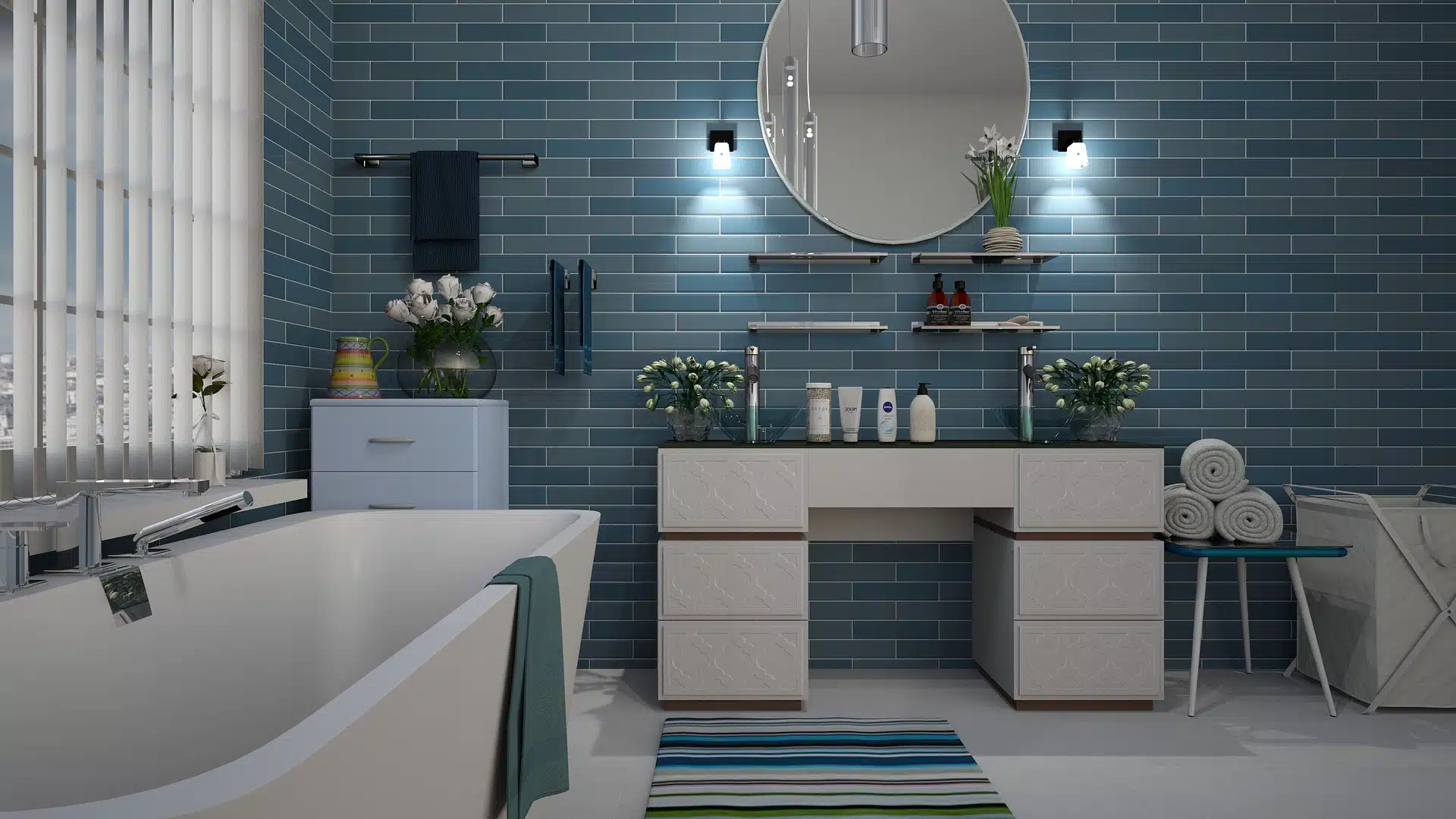
Porcelain Bathroom Vs. Ceramic Tile
Posted on: December 25, 2021
Ceramic and porcelain tiles are both beautiful and functional. These tiles can be found on the floors, walls, and backsplashes of kitchens and bathrooms. The popular tiles come in a variety of colors and patterns to complement – or perhaps create – your room’s decor. Understand the differences between porcelain and ceramic tile before deciding on a style. Continue reading to learn the advantages and disadvantages of employing porcelain vs. ceramic tile in your bathroom remodeling project.
Porcelain vs. Ceramic Tile: How are they different for your bathroom remodeling project?
Although both tiles are made of clay and cooked in a kiln, porcelain is quite different from ceramic. Porcelain clays have a higher density and are burnt at a higher temperature for a longer period than ceramic clays.
Because of the differences in components and manufacturing methods, many varieties of tile have distinct properties. When deciding between porcelain and ceramic tiles, each has its own set of benefits and drawbacks.
The Advantages of Porcelain Tiles
As previously stated, the composition and manufacturing technique are the fundamental differences between porcelain and ceramic tile. Porcelain is manufactured by combining finer clay with higher pressures and baking at higher temperatures in a kiln. Porcelain tile has several distinct characteristics as a result of this.
Porcelain tile’s density makes it more durable than ceramic tile while also making it less susceptible to constant usage. Therefore, it is more acceptable for both commercial and domestic use.
When compared to ceramic tile, porcelain tile is almost immune to water. Porcelain must have a water absorption rate of 0.5 percent or less, according to ASTM specifications. Ceramic tiles are porous and absorb more water than other types of tiles. Small chips in unglazed porcelain tile may not be as obvious as they would be on a piece of ceramic tile because of the uniform hue of the material.
Porcelain Tile’s Negative Effects
Porcelain tile is an attractive option for various applications such as bathroom remodeling, but it is not without flaws.
Cutting: Porcelain is a fairly tough material. To cut it, you’ll need to be skilled and use specialized instruments. For a novice DIYer, this cannot be easy. A homeowner might choose to pay for professional installation.
Porcelain tile is more expensive to produce. When compared to ceramic tile, this entails a higher price. Its long-term durability, on the other hand, saves money over time.
Ceramic tile is versatile and comes in various finishes ranging from plain to elaborate, traditional to contemporary. Ceramic tile can be less expensive than porcelain tile due to differences in components and production.
Cutting Ease: Ceramic tile is easier to cut, making it ideal for DIY projects at home. According to some experts, ceramic tile is more adaptable if you want a more creative, detailed, and eye-catching design in locations like backsplashes. In such cases, ceramic wall tile may be ideal. Glazed ceramic tiles can also be customized with different colors and designs.
Texture: Some ceramic tiles have a textured surface that adds depth and richness to the design. Tiles with ripples, waves, or elevated shapes are common.
Ceramic tile also has several drawbacks
Ceramic tiles are a popular choice for many household applications. There are, however, other factors to consider.
Absorption of water: Water resistance is likely the most important consideration when choosing between ceramic and porcelain tiles for a bathroom remodeling project. Ceramic tile has a higher water absorption rate because it is more porous. It should not be utilized outside of the house. Ceramic tile is not as durable as porcelain tile. It should not be used in high-traffic locations.
Ceramic Vs. Porcelain tiles- Which is the better option?
The right answer for this is debatable. The many varieties of tile are appropriate for various areas of a home. Cost and water-resistance are usually the two most important factors to consider.
Bathroom tiles made of porcelain are more water-resistant. They’ll function nicely in rooms with a lot of humidity. Bathrooms and showers commonly use ceramic and porcelain tiles.
Porcelain tiles have stronger water resistance, making them good for an outdoor patio or other external applications. This is especially true in colder climates, as porous tile is more likely to collect water and shatter when exposed to freezing temperatures.
Porcelain tile is denser and tougher than ceramic tile. It’s particularly useful in high-traffic areas like kitchens, mudrooms, hallways, and living rooms. Ceramic floor tiles, on the other hand, have a softer texture. Walking on them is more pleasant than on porcelain. They are popular in houses in hotter areas because of their inclination to keep cooler than porcelain.
Conclusion
Irrespective of the variety of tile that you are looking for to use in your bathroom remodeling project, the experts from Trademark Construction will help you choose the best option. Therefore, you can trust the team for all your renovation project needs and be assured of the most excellent results.
